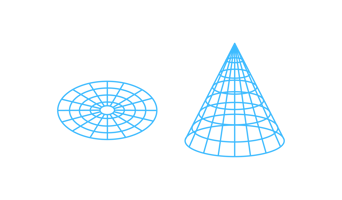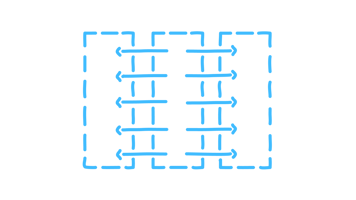Matrix organizational structures are powerful mechanisms for aligning an organization along two key management dimensions. However, they are often a source of confusion and organizational friction. Through our experience, we’ve discovered that there’s one organization design feature that goes a long way to making the matrix truly work.
Matrix structures - a definition and an example
A matrix structure consists of (at least) two interlinked unit structures defining dual groupings of roles and units, including dual reporting to two or more organizational units. As the strongest formal coordination mechanism across units, the matrix structure aligns organizational subunits to two separate units at the same time, e.g., to a product-marketing division, to a functional division and/or a geographic division. For example, the product manager of a geographic division would report to both the regional business head and to the global product-marketing head.
The one design feature you need to get right in any matrix organization
Designing for matrix structure management faces a crucial decision: namely whether the dual alignment is balanced between the two dimensions or whether there is more power and weight given to one dimension over the other. For example, a primary matrix dimension could be the business divisions and the secondary dimension could be a function. Within the matrix organizational chart, this hierarchy of matrix dimensions is often represented as “solid line” vs. “dotted line” reporting. In practice, this means that the “solid line” function has more formal power to resolve potential tensions between the two dimensions (for example, when there is a trade-off between business priorities and the priorities of a support function).
Regardless of whether you see the matrix relationships as more balanced or designed for a hierarchy between dimensions, the one thing you must do is to define the exact scope of each reporting relationship, respective of decision-making rights, as well as the mechanisms for conflict resolution. By doing that you avoid unnecessary alignment and coordination work and prevent second-guessing between the two dimensions.
How can you avoid weak matrix organizations? By doing the detailed organization design work that enables strong matrix organizations
What is often forgotten when people discuss matrix structures, is that a matrix is essentially a linking mechanism to allow two different unit structures to act in a synchronized way and make optimal decisions. Institutionalizing multiple dimensions into one structural set-up is one of the key advantages of matrix structures compared to other, process-oriented or temporary linking mechanisms. The resulting complexity of the matrix, while often seen as a disadvantage, is unavoidable to some extent. The complexity of the organization typically reflects the complexity and the dynamics of the company’s environment and market place. If you don’t pay enough attention to the details of the organization design, such as the exact nature of the solid and dotted line relationships, more friction than necessary will occur, friction that could be avoided to a significant extent.
The “Design matrix reporting” tool from the Organizational Structure Kit gives you the complete process guidance, criteria, and working methodology to get collaborations along matrix dimensions and the matrix reporting structure right.



